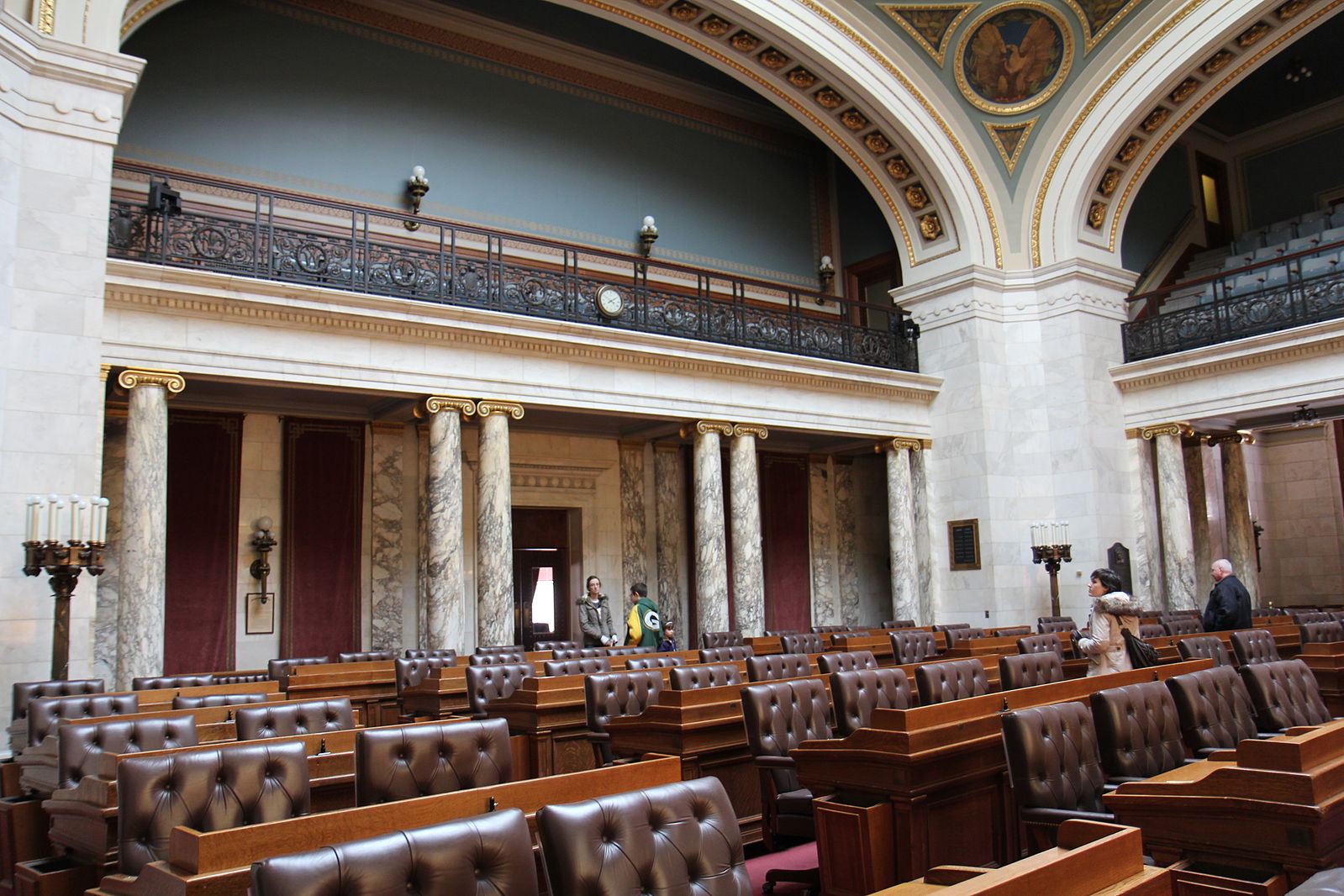Justices reverse Wisconsin court ruling that increased majority-Black districts in state legislature


The Supreme Court on Wednesday threw out a ruling by the Wisconsin Supreme Court that adopted a redistricting plan submitted by the states governor, Democrat Tony Evers, for seats in the states legislature. The state courts plan would have increased the number of majority-Black districts in the Wisconsin State Assembly from six to seven, but the Supreme Court, in an unsigned decision, sided with the Republican-led legislature and ruled that the state court was mistaken in its use of race to select a voting map. In a dissent, Justice Sonia Sotomayor, joined by Justice Elena Kagan, called the ruling unprecedented and accused the majority of engaging in an emergency intervention that was not only extraordinary but also unnecessary.
At the same time, the justices turned down a separate request from Wisconsin Republicans related to the states voting map for congressional districts. In a one-sentence order, the justices declined to toss out a Wisconsin Supreme Court ruling that adopted the governors map for those districts.
The state legislative maps
Like other election-law disputes before the court recently, the dispute over Wisconsins state legislative districts, Wisconsin Legislature v. Wisconsin Elections Commission, has its roots in efforts by the legislature to create new voting maps in the wake of the 2020 census. In 2021, the Wisconsin legislature drew new maps for the state assembly and state senate. Evers vetoed both maps.
At roughly the same time, the existing districts were challenged in federal and state court, on the ground that the districts were malapportioned that is, that their populations were not equal, in violation of the Constitution. The federal lawsuits were put on hold while the state court proceedings went forward. The Wisconsin Supreme Court asked the parties in the lawsuit, which by then included the legislature, the governor, two groups of voters, and non-profits like the League of Women Voters, to propose new redistricting plans.
The legislature submitted the same plan that it had previously drawn. That plan decreased the number of majority-Black districts in the assembly from six to five. Evers submitted a plan that increased the number of such districts to seven.
On March 3, the state supreme court issued a decision that blocked the state from using the existing districts and adopted the governors proposed plan. The court explained that, compared to the other possibilities, Evers plan resulted in more voters staying in the districts to which they had previously been assigned. Moreover, the state supreme court added, there are good reasons to believe a seventh majority-Black district is needed to satisfy the Voting Rights Act, which bars racial discrimination in election rules and protects the ability of minority voters to elect their chosen candidates.
The Wisconsin legislature (along with a group of four voters) came to the U.S. Supreme Court on March 7, asking the justices to reverse the state courts ruling immediately or put it on hold and hear oral argument in the case on the merits. They also asked the justices to order the state to use, until the dispute is resolved, the maps that the legislature drew.
The legislature told the justices that, unless they intervene, the upcoming elections for the state legislature will be run on racially gerrymandered district lines that could not possibly survive constitutional scrutiny under the 14th Amendments equal protection clause. Race, the legislature contended, dominated the drawing and adoption of this plan, and the state courts order requiring the state to use the plan cannot be reconciled with the Supreme Courts repeated warning that the Voting Rights Act does not require states to maximize the number of majority-minority districts.
The Wisconsin Elections Commission did not take a position on the legislatures request to freeze the state courts order, but it urged the justices to act by March 15 so that it could implement any new map in time for the upcoming election. Although the primary is not scheduled until Aug. 9, candidates will begin circulating nominating petitions on April 15.
Others took a stronger stance, however. A group of voters, non-profits, and Evers all told the justices that the legislature and the individual voters do not have a legal right to sue, known as standing, to challenge the creation of seven majority-Black districts because the voters do not live in Milwaukee, where the districts are located, and none of them are affected by the alleged gerrymandering. In this case, they continued, there was no racial gerrymandering: The Wisconsin Supreme Court chose the maps because they made the fewest changes from the previous versions. But in any event, they concluded, both the Wisconsin Supreme Court and Evers had good reasons to believe that Section 2 of the Voting Rights Act required the governor to include a seventh majority-Black district in the Milwaukee area.
In an unsigned seven-page opinion, the justices reversed the Wisconsin Supreme Courts decision adopting the governors map and sent the case back to the state court. The majority explained that by issuing its ruling now, without additional briefing or oral argument, it would give the state court enough time to adopt new maps for the Aug. 9 primary election.
The majority reasoned that, to justify race-based districting, a state must show a good reason to believe that the Voting Rights Act requires such a result. If the Wisconsin Supreme Court regarded Evers as the mapmaker, the majority explained, it was clearly wrong to do so. Evers had contended, without more, that he had drawn an additional majority-Black district because there was a chance to do so a sufficiently large and compact population of black residents to fill it. But even if the Wisconsin Supreme Court saw itself as the creator of the map, it still needs to go back to the drawing board, the majority continued. Among other things, the majority noted, the court could adopt the maps only if it believed the Voting Rights Act required an additional majority-Black district which, the state court conceded, it could not say for certain. When the case returns to the state court, the majority stressed, that court is also free to take additional evidence if it prefers to reconsider the Governors maps.
In a four-page dissent, Sotomayor noted that summary rulings those that the Supreme Court issues based on abbreviated briefing and no oral argument are generally reserved for decisions in violation of settled law. But in this case, Sotomayor wrote, the Supreme Court is sending the case back because the state supreme court failed to comply with an obligation that, under existing precedent, is hazy at best. Whats more, she wrote, the Supreme Courts intervention on Wednesday is not only extraordinary but also unnecessary because the state court left open the possibility that someone could still bring a challenge to the maps. I would allow that process to unfold, she concluded.
The congressional map
The justices also denied a request by five Republican members of Congress to block the Wisconsin Supreme Courts ruling adopting a new congressional map proposed by Evers. The ruling in Grothman v. Wisconsin Elections Commission means that the states upcoming 2022 congressional elections will go ahead using the Evers map, which still favors Republicans.
As with the state legislative maps, the dispute over the congressional map wound up in the Wisconsin Supreme Court after Evers vetoed the map that the legislature drew in 2021. The state court asked the parties to the dispute to submit new maps, and on March 3 a divided court chose the governors map. The members of Congress asked the state court to put its ruling on hold while they went to the U.S. Supreme Court, and to allow all of the parties to submit new maps, but when the state court did not act on that request by March 9, they went to the U.S. Supreme Court instead.
At the Supreme Court, the Republican members of Congress argued that the state court so clearly violated the Constitution in two different ways that the justices should reverse its ruling adopting the Evers map without additional briefing or oral argument. The members of Congress offered two options for the upcoming 2022 congressional elections: The Supreme Court could send the case back to the Wisconsin Supreme Court with instructions to allow all of the parties to submit new maps, or it could order the state to hold the elections using the map that the legislature drew (but Evers vetoed) in 2021.
First, the members of Congress said, the Wisconsin Supreme Courts ruling violates the Constitutions due process clause because it pulled a bait and switch. It told the parties that it would use one standard looking at which map resulted in the least amount of change from the prior version, which the members of Congress described as a holistic approach but instead focused only on the extent to which the maps retained the core of existing districts, without providing any notice to the parties that it intended to do so and without giving them a chance to submit new maps.
The Evers map is also unconstitutional, the members of Congress continued, because it fails to distribute the population equally among the states congressional districts. Perfect equality would put either 736,714 or 736,715 people in each of the states eight districts, but instead Evers put 736,716 in some districts and he did so, he said, because he believed that he didnt have to be more precise.
The members of Congress assured the justices that the state would not be harmed by a delay to allow the state supreme court to adopt a new map that passes constitutional muster.
The Wisconsin Elections Board pushed back against the suggestion that the state has enough time to change maps. Although the board noted that it has not weighed in on which map should ultimately be adopted, it stressed that it has serious concerns about the negative practical consequences that could result from even temporarily delaying implementation of the maps that were approved by the Wisconsin Supreme Court on March 3, 2022.
Evers echoed the boards concerns, telling the justices that putting the state courts ruling on hold would pose a grave risk of confusion and disruption in the upcoming Wisconsin election. He suggested that it takes true chutzpah for the members of Congress to characterize the state courts ruling as a bait and switch, arguing that they themselves specifically agreed with the state court that its approach should focus on maximizing core retention. But in any event, Evers noted, accepting the members theory that a court violates the Due Process Clause if it announces a legal standard and then later refines or alters that standard in the course of applying it would transform a wide range of routine state and federal judicial rulings into alleged constitutional violations.
A group of Wisconsin professors specializing in math, statistics, and computer science that had submitted a map to the Wisconsin Supreme Court also urged the justices to leave the state courts ruling in place. They noted that the Supreme Court has never held that a maximum deviation of two persons in a congressional districting plan violates the Constitution.
In a brief unsigned order on Wednesday, the justices turned down the request to block the use of the governors congressional map. There were no dissents recorded from that order.
This article was originally published at Howe on the Court.
Posted in Election litigation
Cases: Wisconsin Legislature v. Wisconsin Elections Commission, Grothman v. Wisconsin Elections Commission
